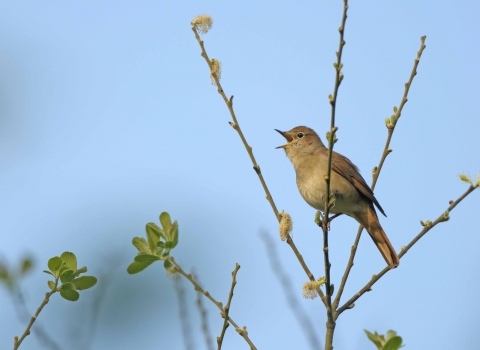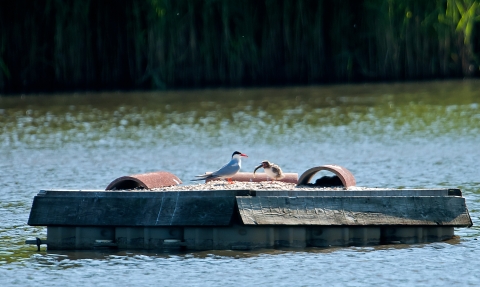
© Ian Cameron-Reid
Creating new nesting sites for terns
Along the Solent coastline we are lucky to have common, little and Sandwich terns breeding regularly and even nesting roseate terns on occasion.
In recent years, however, these birds have been hit by a devastating combination of lost habitat, disturbance, lack of food and increased threats from predators. But with a little ingenuity, hard work and determination we are starting to reverse their sharp decline.
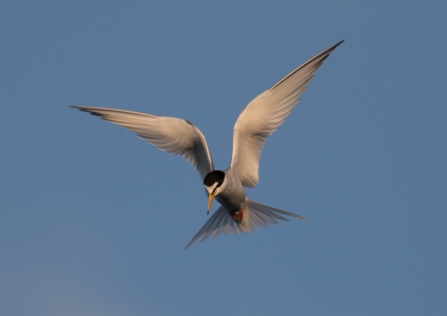
© Trevor Codlin
The trouble for terns
The problem begins with terns’ preferred choice of habitat. Terns like to nest on bare shingle or sand, creating scrapes in the stones to lay eggs that are camouflaged to look like pebbles. For most birds this habitat will be found on the coast but common terns will also nest inland.
The good news is that the Solent coast has lots of shingle beaches, but the bad news is that they are very popular with people too — this forces the terns to find somewhere else to settle.
What’s more, our shingle beaches are being squeezed by rising sea levels on one side and growing coastal development on the other. Shingle islands would be ideal nesting habitats, safer from predators like foxes and less visited by people.
Unfortunately shingle islands are in short supply and therefore much sought after by other species, most recently by gulls displaced from nearby saltmarshes flooded by high tides. In some years tidal surges have even overtopped the shingle islands, flooding the tern nests.
A changing environment
To make matters worse noisy gull colonies attract the attention of predators; foxes will swim out on the promise of a good meal, putting the terns that nest among the gulls at risk.
A further problem is a lack of food. All terns eat fish, but these need to be of the right size, especially for small chicks, and abundant enough that they can feed a growing family. Changes in climate are influencing both the numbers and types of fish living in the Solent, compounded by other factors such as pollution and human fishing activity.
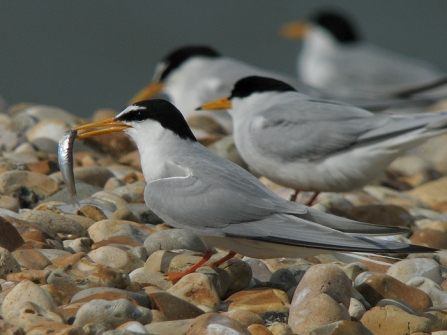
© Jason Crook
A raft of hope
Who would have imagined that an artificial raft would have such an effect on tern numbers and, even more so, a fake tern sat atop the platform? But that is exactly what has happened.
Around ten years ago we installed the first of our purpose-built nesting rafts at Blashford Lakes nature reserve near Ringwood. The raft was topped with shingle, replicating the conditions found on our local shores.
It proved to be a success. In 2008 the first pair of common terns to use the raft raised three young. A grant from Hampshire Ornithological Society then enabled us to increase the number and quality of the rafts and by 2017 the number of nesting pairs at Blashford had risen to 39! Nesting success has been very high with usually more than two chicks fledged per nest — over twice the national average fledging rate.
At other sites we have even added decoy terns to the rafts. Terns are sociable and nest in colonies so if they see other terns (even fake ones) nesting happily, they will be attracted to the same area.
Tern-ing the tide
Supported by a dedicated team of volunteers, we have worked with organisations across the Solent to give terns a fighting chance:
- At Farlington Marshes near Portsmouth we have erected raised pontoons within the larger water bodies to create stable islands. Fox-proofing some of the smaller islands at the reserve has also helped.
- Some of our most promising work has been on our Pewit Island nature reserve in Portsmouth Harbour. Once home to a thriving black-headed gull colony and quite likely terns too, it was reduced to nothing in the 1800s due to egg collectors. Staff and volunteers have removed scrub and added a large quantity of shingle to improve the habitat for nesting birds. We hope it will provide a safe and reliable spot for a colony to establish.
- With the help of Southern Water we recently floated a raft on a lagoon at Budds Farm Sewage Facility just west of our Southmoor nature reserve in Havant. Protected from the tides and wind, it is potentially a safe place for the birds to establish.
- At the Oyster Beds on Hayling Island, Wildlife Trust staff and volunteers helped launch the very successful RSPB raft.
- On the coast at Lymington and Keyhaven we have teamed up with Hampshire County Council, Lymington Harbour Commissioners and the RSPB EU LIFE terns project to make a concerted effort to increase the available habitat and introduce wardening of nesting areas.
We would like to thank to our brilliant volunteers and our partner organisations that made this conservation work possible.
More on our work to save wildlife
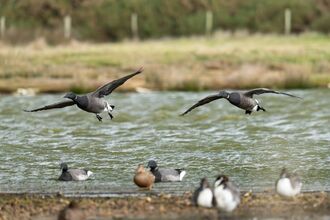
Give migratory birds space on the coast this winter
Hampshire & Isle of Wight Wildlife Trust is calling on the public to help migratory birds returning to the Solent this autumn and…
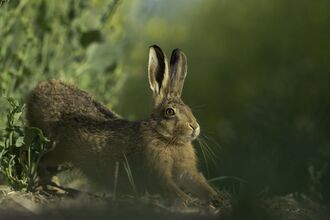
A fleet-footed farmyard star
One of our countryside’s most iconic and agile mammals is the brown hare (Lepus europaeus). Known for its long, black-tipped ears and…
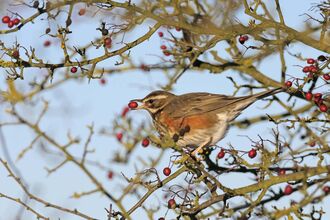
Flashes of red in the countryside
As autumn slips into winter, thousands of redwings – small thrushes from the far north – arrive in the UK from Iceland and Scandinavia,…



